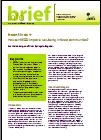CIFOR: REDD+ Capacity Building
-----------------
Conversely though, if well designed and implemented REDD has the potential to improve the livelihoods of forest-dependent people. It could prompt governments to clarify and formalise land tenure, enabling forest communities to benefit from payments and incentives for forest conservation.
REDD offers new income streams for investment in services in rural areas, such as health, education and water sanitation, or as direct revenue to forest dwellers themselves.
Whether REDD benefits or disenfranchises indigenous and forest-dependent communities depends on the details of the agreements that are finally negotiated. This may occur on a country by country basis. However, there are a number of international legal instruments relevant to REDD that could underpin a rights-based approach to REDD design and implementation. Most prominently, the UN Declaration on the Rights of Indigenous Peoples requires states to grant legal title to indigenous people's customary lands. If the international REDD regime were to be aligned with this declaration, it would guard against the risk that states could expropriate indigenous people's lands in order to capture REDD revenues. Of course, many further issues would remain, for instance around the rights of forest-dependent communities that are not technically considered indigenous.
The readings in this section provide in-depth coverage of the issues around tenure, human rights, and a rights-based approach to REDD.
|
---------------


